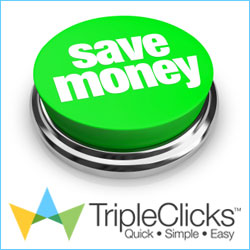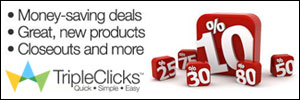What is “career design” and why is it important?
When it comes to your career, how satisfied do you feel? Are you happy to go to work in the morning? Does the idea of Monday morning bring joy and excitement, or fear and disappointment?
At the heart of a career, design is a challenge: to design a career that brings you not only satisfaction but supports your wellbeing.
Satisfaction at work
If you’re unsatisfied with your job, you’re not alone. According to Gallup’s latest State of the Global Workplace report, just 6% of Japanese workers report being engaged in their workplace. Workplace engagement is often a measure of how satisfied employees are at work; it measures not just happiness but well-being, and how emotionally invested workers are with their company.
It’s an important statistic to capture, and it’s telling. Globally, employee engagement is at just 15%. This is bad news for the global economy. If employee engagement is the sign of a healthy workforce, the opposite is true for the unengaged: higher rates of absenteeism, lower productivity, and profitability, and more likely to look for other opportunities.
So does it matter if you’re satisfied with your job? Absolutely. Not only for your own physical and mental well-being but for the well-being of your company and your colleagues.
How to design your own career path
One antidote for an unsatisfying career is career design. This is the proactive planning of your career path -- whether it be by small daily changes or big overarching modifications.
There are three main phases to career design.
Step 1: Reflect
It’s important to reflect regularly on the trajectory of your current career and think about not just the short term, but the long term as well. This will help in the planning stage to determine your next career move.
Some helpful questions to ask yourself include:
- What do I want most in a job?
- What specific parts of my job bring me joy?
- What do I like the least about my job?
- Is this job bringing me closer to the job I want in the future?
It may be helpful at this stage to ask people you trust questions about your strengths and weaknesses at work. Often, other people can provide insight into ourselves that we cannot see.
Step 2: Plan
Once you’ve taken the time to evaluate the current status of your career, it’s time to plan. Sometimes, your next step will require big changes: perhaps it’s time to look for a new job, or maybe even an entirely new career path. But others may require only small tweaks to your current role to make a difference.
Regardless of whether your required actions are big or small, it’s a good idea to write down your overarching aim, your next steps, and how to know whether you’ve achieved what you set out to achieve. Try using the SMART method: make sure your goals are specific, measurable, achievable, realistic, and timely.
Step 3: Execute
Of course, all this work is for nothing if you don’t put into action what you’ve discovered. Remember that you don’t need to do all of this straight away; in fact, in some situations, a slow, measured plan of action is more beneficial than rash decisions. For example, if you’ve realized you’ll need to totally retrain to move towards a different career path, it is better to do so when you are financially secure. If you need to look for a new job, it is better to do so when you’ve already got a steady income.
Career design is not a static process; it’s dynamic and ongoing. Through constant reflections and small tweaks here and there, it is possible to build a career that’s not only satisfying but gets you excited to go to work every day. Not only is this of benefit to your health and happiness, but it’ll make you a better colleague, a more supportive boss, and a productive member of society.
10 Types of Design Jobs for Creative People
Your love of color, artistic eye, and impeccable sense of style cause people to label you a creative person—and you wear that label proudly. You embrace it as you enjoy expressing your originality and making things visually appealing.
But what if we told you there was a way to exercise your creativity full time instead of just on the side with occasional projects? Better yet, what if you could get paid to be creative daily? The truth is there’s a wide array of design careers where people just like you can thrive.
So what’s out there for people with an eye for design? We’ve identified 10 types of design jobs that are perfectly suited for creative people. Included below is a brief breakdown of what each position entails and some of the skills needed for success. Take a look and see which creative careers interest you most.
10 Creative careers in the design field
Great news for all you creative folks—many types of design careers allow you to capitalize on your inventiveness. Learn more about a few exciting jobs for creative people like you.
1. Graphic designer
One of the most common design careers out there is graphic design. These professionals create designs for marketing collateral, product illustrations, brand identities, and websites using computer software like the Adobe® Creative Suite.
They merge technical skills with artistic ability to create a design that resonates with its desired audience. Graphic designers may work independently as freelancers or contractors, in an in-house setting for a company or in an agency setting.
Common skills for graphic designers:1
- Adobe® Creative Suite
- Typesetting
- Marketing materials
- Social media design
- Website design
- Packaging
Interested? Learn more in our article “What Is Graphic Design? A Beginner’s Guide to This Creative Career.”
2. User experience (UX) designer
UX designers make websites, mobile applications, software, and video games easier to navigate and more intuitive for users to interact with. They study and evaluate how people feel about a particular system and design their products to cater to the needs of the user. They also analyze the specific components of the systems, such as usefulness, value, credibility, and accessibility.
For example, a UX designer might work with a retailer to update their product webpages and mitigate issues, like frustrating forms, hard-to-find buttons, and visual clutter, that can prevent users from making a purchase.
Common skills for UX designers:1
- UX wireframes
- Prototyping
- Visual design
- User research
- Adobe Creative Suite
For more information, check out our article “8 Basic User Experience Guidelines Designers Need to Know.”
3. User interface (UI) designer
A close relative of user experience design, this specialized design role is focused on creating (or improving existing) interfaces. Not sure what that means? Think of the menu systems of your favorite apps or the touchscreen displays you see in vehicles—those are prominent examples of an interface, and a lot of careful consideration goes into ensuring they’re intuitive, aesthetically pleasing, and easy to navigate.
This role requires user empathy and the ability to balance the needs of the user and the needs of the application’s creator. Typically, UI design requires a mix of design, psychology, and development know-how to be successful.
Common skills for UI designers:1
- Adobe Creative Suite
- Interaction design
- UX wireframing
- JavaScript
- User research
For a more in-depth breakdown, check out our article “What Is User Interface Design? An Introduction for Aspiring Designers.”
4. Photographer
Photographers utilize their creativity and composition skills alongside their technical expertise to capture photographs that tell a story or document an event. The majority of today’s photographers work with digital cameras and editing software to capture subjects in commercial-quality images. Some travel to a location to shoot an event or scenery while others have their own studios for portraits, commercial shoots, or artistic work.
Common skills for photographers:1
- Digital photography
- Customer service
- Videography
- Adobe Photoshop®
- Video editing
- Social media
5. Interior designer
Professionals in this occupation work with interior spaces to improve the safety, functionality, and aesthetic appeal of the area. They select color schemes, furniture, flooring, lighting, and all other elements of a room or building. Interior designers also sketch their ideas or use design software to communicate their plans with the architects, structural engineers, and builders who bring their designs to life.
Common skills for interior designers:1
- Customer service
- Budgeting
- Computer Aided Drafting/Design (CAD) software
- Space planning
- Project management
- Purchasing
6. Multimedia artist & animator
These professionals create animations and special effects for movies, television, video games, and other forms of media—both two-dimensional and three-dimensional. They work with teams of animators and artists to bring ideas to life using computer software or by writing their own computer codes. Some work in studios or offices, but many are self-employed and work from home.
Common skills for multimedia artists and animators:1
- Adobe Photoshop®
- Animation
- Graphic design
- Motion graphics
- Adobe Aftereffects®
- 3D modeling
Sound interesting? Learn more about this position in our article “Everything You Need to Know About Working in Animation.”
7. Art director
Typically a role reserved for experienced design professionals, art directors work in a variety of settings, such as magazines, newspapers, internet-based publications, and advertising or public relations agencies. They communicate with clients while overseeing project budgets and timelines. They manage a team of design professionals, reviewing and approving all creative materials before presenting them to clients.
Common skills for art directors:1
- Adobe Creative Suite
- Graphic design
- Budgeting
- Creative direction
- Project management
For a closer look at the role, see our article “What Does an Art Director Do? Expert Insight from the Pros Who Know.”
8. Advertising & promotions manager
Professionals in these positions often work in agencies to organize campaigns for clients. They may also be responsible for selling advertising space or time for media firms. This is a job for creative people with strong business acumen as they work with sales staff to develop concepts for campaigns, partner with creative teams to produce layouts, negotiate contracts and prepare overall campaign budgets.
Common skills for advertising and promotions managers:1
- Budgeting
- Project management
- Social media
- Ad campaigns
- Digital advertising
9. Fashion designer
Professionals in this field design new clothing and accessories. Designs are sketched on paper or digital devices, and then the colors, materials, and textures of the final product are determined. Fashion designers study fashion trends by reviewing magazines and attending fashion shows. They then provide sample garments to sales representatives and agents in hopes of selling their own collections.
Common skills for fashion designers:1
- Sales
- Customer contact
- Merchandising
- Product design and development
- Adobe Creative Suite
- Sketching
10. Film & video editor
Film and video editors use technical software to construct promotional or artistic productions from footage shot by camera operators. This creative career involves working with directors and producers to determine which material is most captivating for their audience and to help piece together scenes. The editing process involves trimming footage down into segments, marking frames for audio, and organizing raw footage into a seamless and polished final product.
Common skills for film and video editors:1
- Video editing
- Adobe Creative Suite
- Social media
- Video production
- Music and sound implementation
Start creating your ideal design career
It’s now clear that there are many different types of design jobs that will allow you to exercise your creativity day in and day out. With such a wide variety of opportunities, you should be closer to finding the creative careers that align best with your skills and interests.
If you're ready to take the next step toward a creative career, a Graphic Design degree may be an excellent starting point for many of the roles highlighted above. Check out the Rasmussen University Graphic Design program page to learn more about the program, or request more information today to hear from an admissions advisor.





















0 Comments
Thank you for being here.. Tell us what you think.